A few months after arriving in Kenya, Pete and I had the unique opportunity to have dinner with Reverend Joseph Ebei and his wife, Ann. Rev Ebei is the area director of Turkana County with the Africa Gospel Church (AGC). Turkana is an enormous area spanning approximately 30,000 square miles of northern Kenya (the size of South Carolina) bordered by Uganda, South Sudan, and Ethiopia. The Ebeis have followed God’s call to the area and have been a part of planting 19 AGC churches in this region over the last few years. Following dinner, we were invited by our WGM field director, Alene Burgert, to help create a vision trip to the northern part of Turkana County in order to learn how WGM can support the work the AGC is already doing in and around the Kakuma Refugee Camp. This is the first post of the vision trip we took last month.
On the morning of February 21, Pete and I joined our field mentors, Steve and Alene Burgert, and our pastor, Reverend Elijah Bii, to fly from an airstrip not far from Tenwek Hospital all the way up to Kakuma near the border of South Sudan. (Most of our trip photos were taken by either Pete or me, but some were taken by Steve, which is why we are in some of the photos! That doesn’t usually happen for us.)
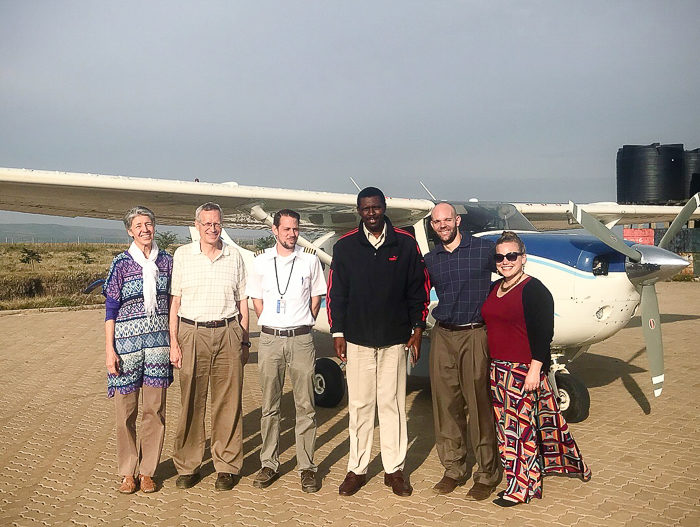
This was my first experience on such a small plane. I thought I would be terrified, but I ended up really enjoying the flight.
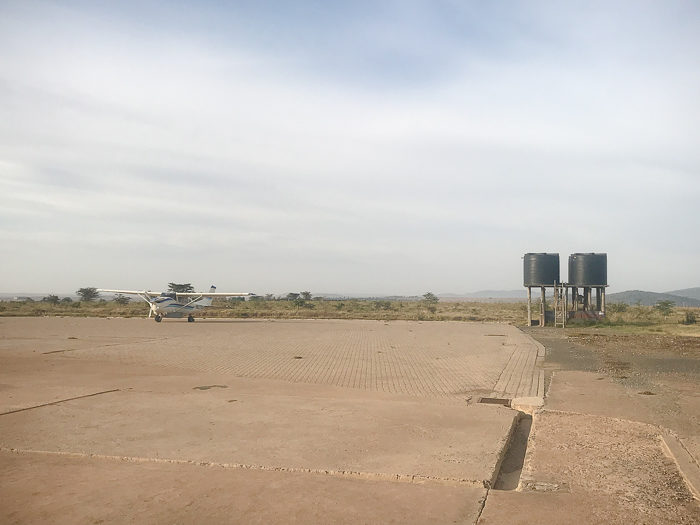
I love any adventure I get to take with this guy. (No, we didn’t pack the kids under the plane. They stayed home with friends for this trip.)

Rev Bii sat in the co-pilot’s seat during the flights. It was the only place he could really fit in the plane since he’s so tall. I’ve never even been close to having that issue. Reaching high shelves? Always a problem. Having enough leg room? I’m fine.

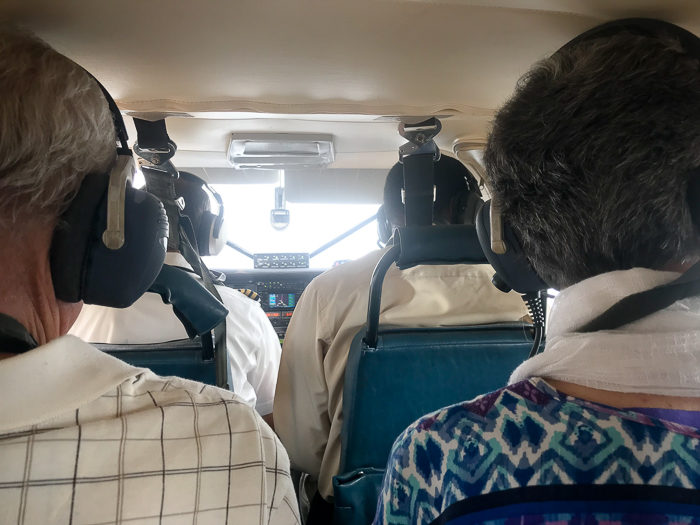
We made one stop on the flight north to refuel at the Samaritan’s Purse Hangar at the Eldoret Airport. We first visited Kenya five years ago through World Medical Mission, the medical branch of Samaritan’s Purse. Did you know Samaritan’s Purse was started by Franklin Graham? Franklin is the son of Rev Billy Graham. One day after this photo was taken, Rev Graham passed away. What an incredible man he was. I’m so thankful my parents took me to hear him speak in Minneapolis when I was in high school. He has left behind an incredible legacy.

This isn’t how I imagined refueling would be done, but it did the trick. One airport employee brought out a barrel of fuel and poured it into a bucket. Our pilot climbed up top and poured it into the tank through a funnel. The wind wasn’t helpful that morning, so we watched as some of the fuel splash over the wings of the plane. In the end, it worked, and we were back on our way to Kakuma.
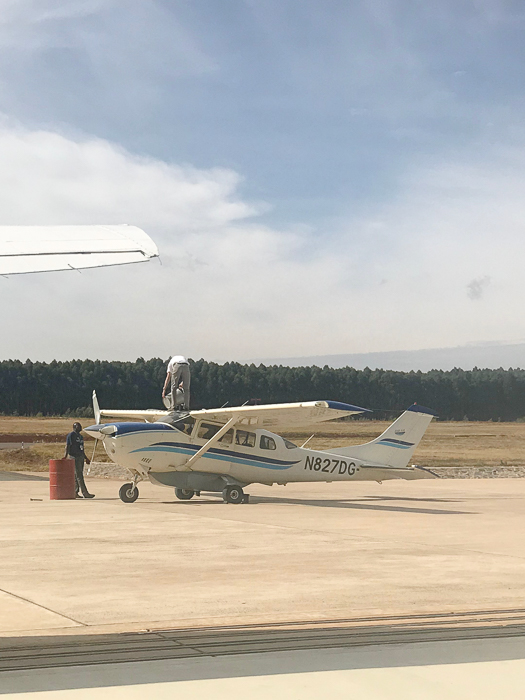
Where we live in Kenya is typically very green. We’re surrounded by tea fields and lush forests.
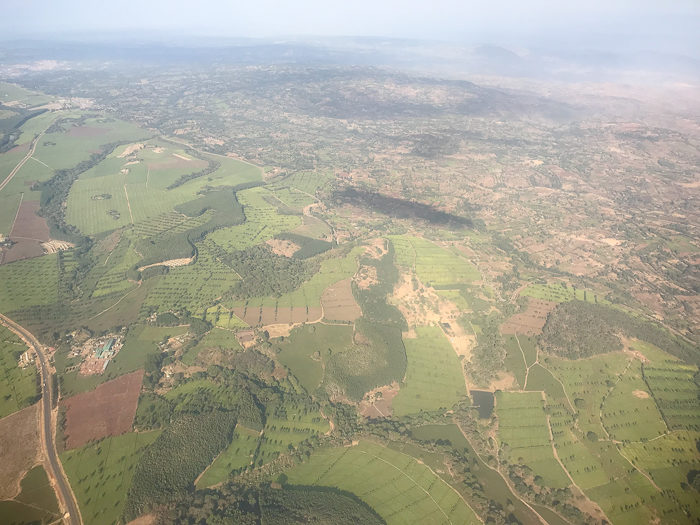
Northern Kenya, however, is incredibly arid. In fact, it’s so different from the other parts of the country that this area is known as “the other Kenya.” The green seen in the photo here consists of sparse, dry leaves on trees close to riverbeds. Further away, nearly everything is brown. We could see from the air that there was a riverbed running through Kakuma, but it was completely dry when we visited. When the rains come, the sandy soil quickly soaks up the water, so the river doesn’t flow for long. This is why there is such an intense need for water throughout the area.
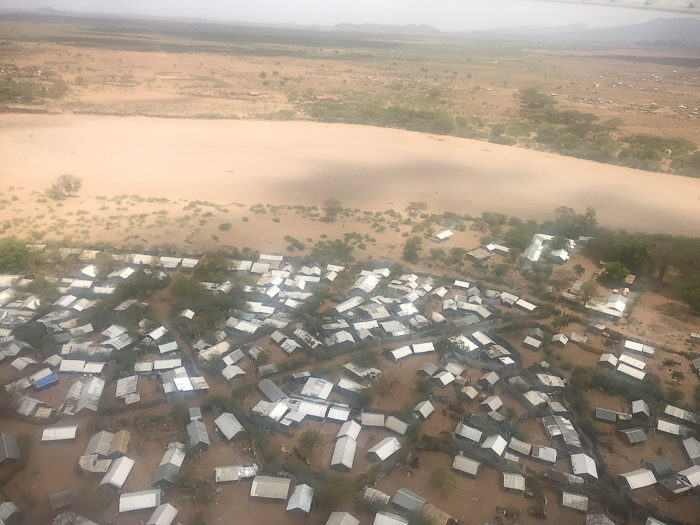
Our first drive through Kakuma town opened our eyes to the unique living conditions of the area.
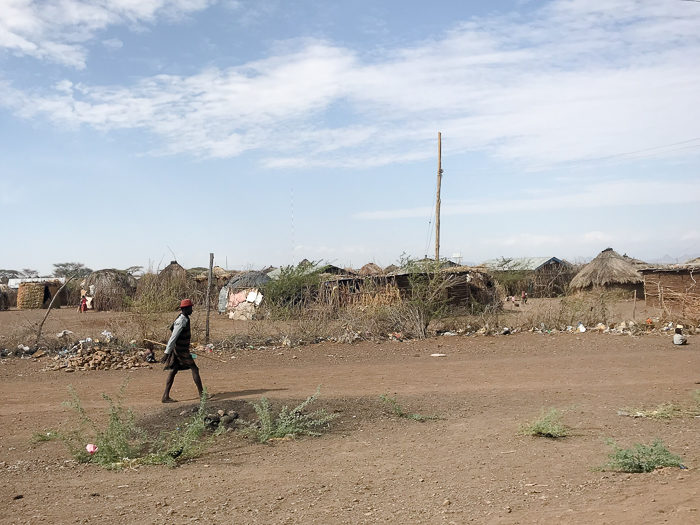
Many people know Kakuma as one of the largest refugee camps in East Africa with people who have fled their homes in Sudan, Somalia, Uganda, and the Congo. However, there is an entire city that exists near the camp where Kenyan citizens live, many who were displaced during the violence that erupted following the presidential election in 2007. These ‘Internally Displaced People’ have created lives in this area with very few resources. We had the privilege of visiting an AGC in one such community.
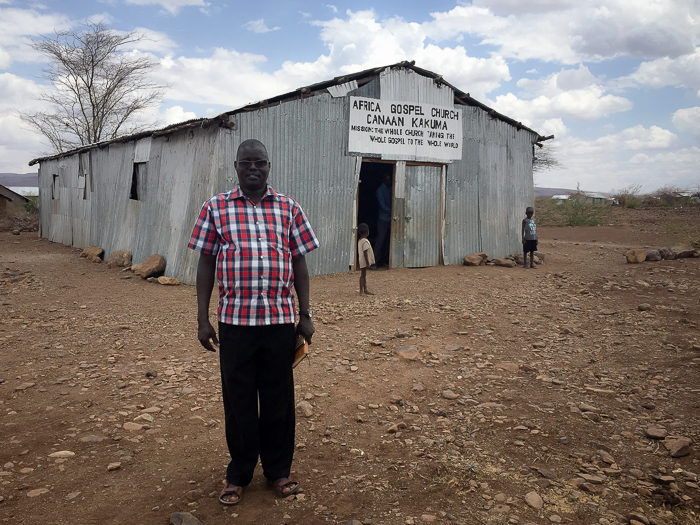
Rev Bii and Rev Ebei shared with those who had gathered to welcome our group to Kakuma. We later returned to the church for an evening worship service.
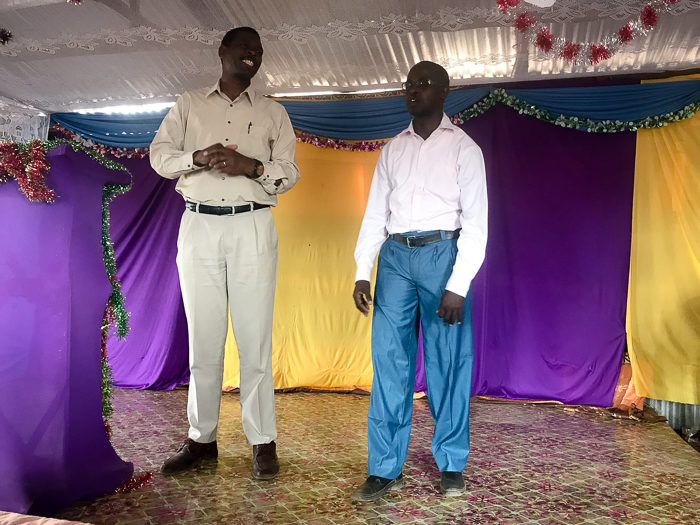
Next, we drove into a part of the Kakuma Refugee Camp to visit a beautifully vibrant Congolese AGC church. We’re working on putting together a video of the worship we experienced at each of the churches, as each was totally unique in style. The women at this church played drums, shook instruments made from tin cans filled with pebbles, and danced and danced. At one point, they even pulled me down to dance with them! I’m so not a spur-of-the-moment dancer, so I just tried to do what they were doing. It was a pretty amazing experience.

I’ve learned that in Kenya a visitor always needs to have a message ready to share when visiting a new place, particularly a church. At each of the seven churches we visited, we each had an opportunity to introduce ourselves and give a brief message to the congregation. Here, Alene spoke to those who had gathered for the service.

It is also customary to serve a meal to guests.
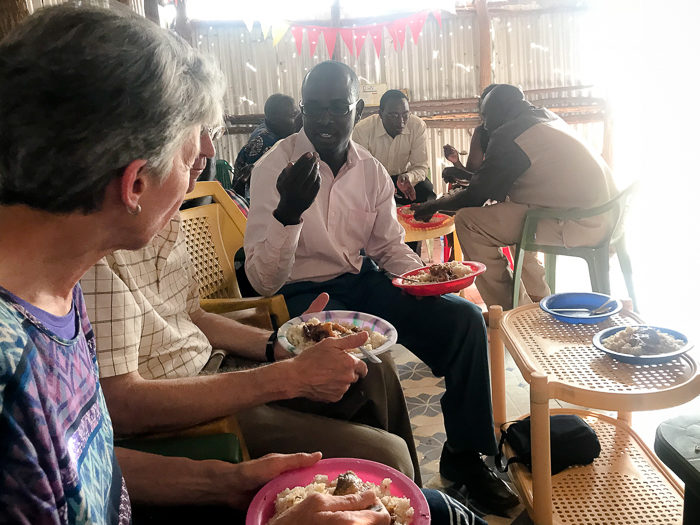
Honestly, it wasn’t easy to accept a heaping plate of food from people we knew had very little to eat. We’ve learned, though, that it is an honor to be served and it would be hurtful for us to turn it down. We were able to take each meal as an opportunity to get to know the leaders of the churches. Here we had boiled goat and rice.

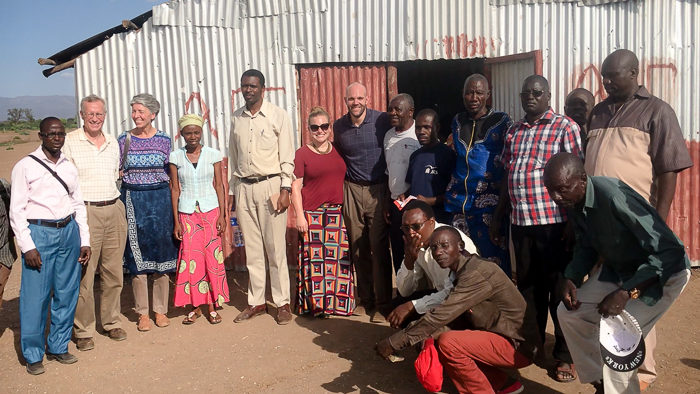
After a very full first day in Kakuma, we had dinner served by one of the church families and went back to our guesthouse for the night. We rinsed off the heat and dust of the day with water in a bucket (there was no running water) before crawling into bed.

Rather, I should say we crawled onto bed. It was far too hot to have even a sheet over us while we slept. There wasn’t enough electricity in the room to power a fan, so we tried to catch what breeze we could through the open window.
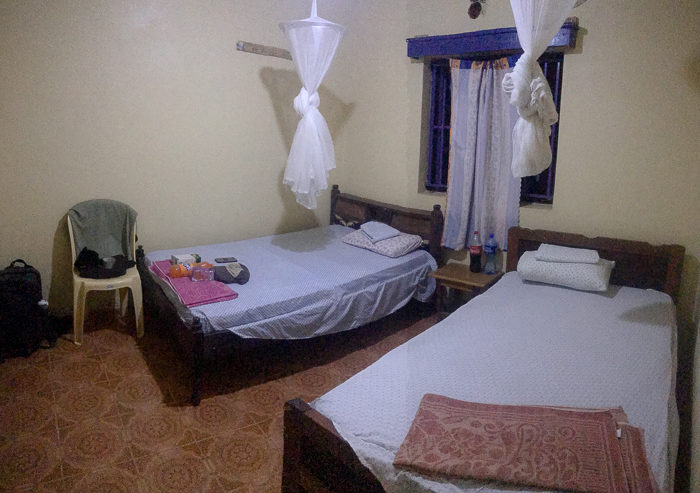
This was an experience unlike any we had ever had, and it was only the beginning. A few weeks later, I still feel like there is a lot to process. Thank you for being a part of our journey and letting us share here on the blog. I’ll have another post up in the next day or two with lots more photos and stories from Kakuma and the border of South Sudan.
For the latest updates on what we’re doing in Kenya, be sure to follow us on Instagram @TheMangoMemoirs.



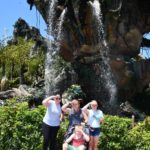
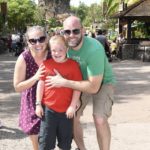
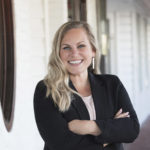
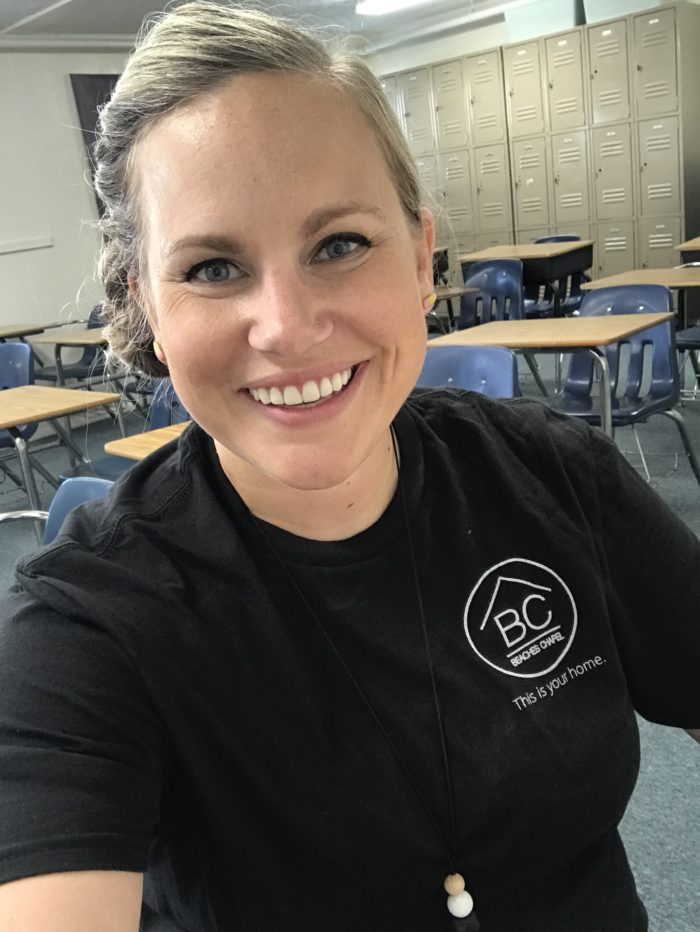
Ha! This sounds like you’re experiencing the only Kenya I know! Dancing, bucket baths, and goat. When we get to Nairobi I’ll have to learn how to navigate city life. 😜 Looking forward to hearing about your experience at the border of South Sudan. It’s an area that burdens our hearts.
Life in Nairobi is going to be a huge change from what you’ve been used to here! I’m so looking forward to seeing what God does through your family and where he leads you!
As always, your writing makes me feel like I’m there. It is exciting to see how God is beginning to build an outreach around your gifts. You are, no doubt, in the right place! Blessings! Love -DAD
Dad, you’re always so encouraging. We definitely feel we’re in the right place for this season. Love you!
Thanks for sharing. Love seeing the world through your eyes.💖
Thank you, Heather!
Glad to see that you had utensils to eat with there. Better than fingers!!
These kinds of life-changing experiences are what we miss the most about Kenya. I even found myself hankering for a bit of that boiled goat!
Jesus, continue to bless the Olsens for their faithfulness in following you wherever!!
Thank you so much for your encouragement, Jim. We absolutely love being here!
[…] The first post from our trip north to the Kakuma Refugee Camp shared a bit about why we went, who we traveled with, and where we stayed. Today, you’ll get a small glimpse of what the camps looked like during our visit. […]
[…] the third post from our trip to Kakuma Refugee Camp at the end of February. (Click over to see the first and second […]